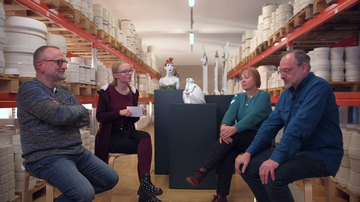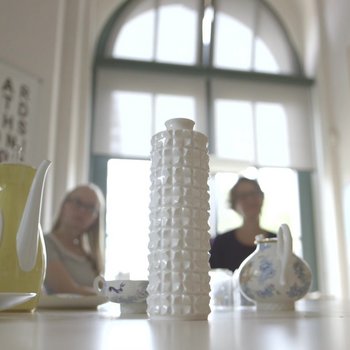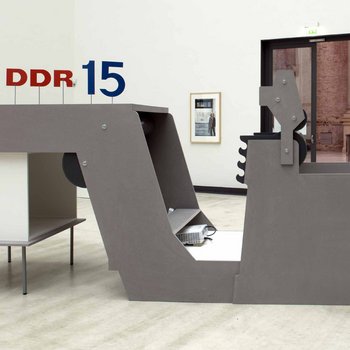The special status ascribed to manufactory workers in Meissen, and the relationship they have with their “Manu”, developed over many generations. Whole “dynasties” were established whose DNA bore the Meissen swords. During the GDR years, workers there enjoyed various perks such as being entitled to stay in hostels and holiday lodgings, payment in the form of “Unsch” (lower-quality porcelain suitable for private use only), individual work anniversary celebrations and much more.
In that time, Meissen’s special status as an important source of foreign currency meant there was rarely a lack of raw materials or the latest technology to produce porcelain, known as “white gold”. These personal testimonies show work at the manufactory, and its workforce, from different angles.


Also of interest:
For East Germany, Meissen Porcelain Manufactory was a prestigious, showcase company of worldwide repute and an important source of foreign currency earnings. As part of today’s “Kontrapunkte” (Counterpoints) project, members of the SKD’s FUTUR III youth advisory board talked to people who experienced the GDR era first-hand, at the spot where it all happened: the Meissen manufactory’s ceramic moulds depot.

In 2022 and 2023, Staatliche Kunstsammlungen Dresden are fixing their gaze once again on GDR times in their research and exhibition project “Kontrapunkte” (“counterpoints”), funded by the German Federal Cultural Foundation. Based on their own holdings and the history of their collection, fresh perspectives are being developed on art in the GDR, how it was seen and the significance allotted to it in the past and present, with the addition of international viewpoints. To this end, a range of physical and digital formats are in the pipeline, information on which will be provided on this platform.

What we can learn from coins and medals goes far beyond discovering hidden hoards or studying the economic consequences of events. Such artefacts also tell us about societies’ beliefs, hopes and fears. Currently, an exhibition at the Münzkabinett (Numismatic Collection) is devoted to the connection between coins and epidemics. Curator Ilka Hagen explains here what one has to do with the other.
![[Translate to English:] Asklepios and Telesphoros [Translate to English:] Bronze medal, the relief of which shows the holy Asclepius. On the right he holds a large, almost club-like staff towards the ground, with the snake coiling around it (Asclepius' or Asclepius' staff), in front of his left stands the small Telesphoros with hood and cape. The inscription reads: "ECOLES DE MEDECINE".](/fileadmin/_processed_/4/c/csm_1a_502b95e988.jpg)